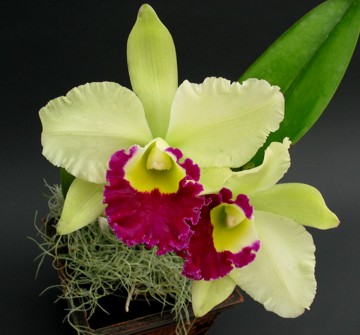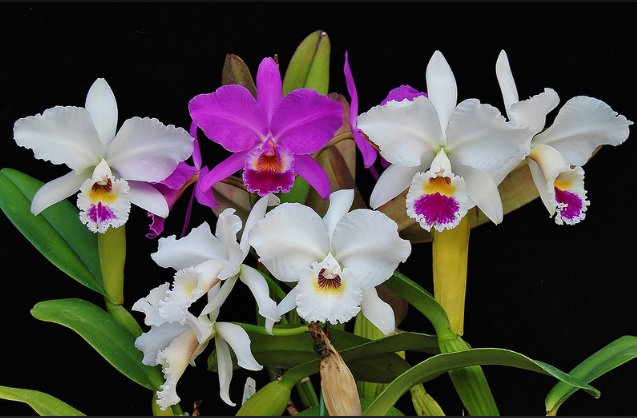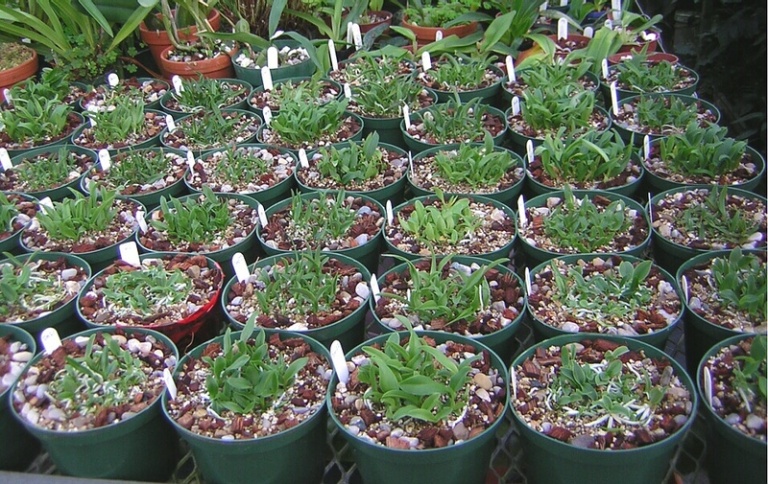
The Cattleya is one of the trademarks of the orchid industry. Years back, a picture of a huge Cattleya flower always comes into mind whenever the word orchid is mentioned. This genus Cattleya is named after the English orchid collector William Cattley, in early 19th century. The Cattleyas and their alliance comprise about 60 or more species, and this plant group still remains to be the best known and most popular of all orchids around the world.

Cattleyas have long been counted amongst the best known and most sought-after orchids because if their beautiful, colorful and large flowers. It is also one of the most recommended orchid group for beginners as they reward the grower with large flowers. Their value to the nursery man has increased through the culture of specific hybrids and intergeneric hybrids.

However, Cattleyas are not native to the Philippines, they are native only to the tropics of the Western Hemisphere, Mostly found in South America, from Brazil through Venezuela, Columbia, Central America and Mexico.
Cattleyas of today actually consist of a complex group of hybrids created by combining Cattleya species or hybrids with closely related genera such as Laelia, Brassavola, Encyclia (Epidendrum), Sophronitis, Broughtonia, Schomburgkia, Diacrium, and intergeneric hybrids like Brassalaeliacattleya (Blc.) Laeliacattleya (Lc.)
Growth Habit
The Cattleyas have a sympodial type of growth habit, wherein the real orchid is its rhizome, a underground horizontal stem, and new pseudobulbs grow from each new node. The pseudobulbs are capable of storing water and nutrients; thus, the growth of new pseudobulbs is dependent on the previews old pseudobulbs.
They can be divided into two groups according to the number of leaves namely the single-leaved or labiata group, to which the C. labiata species belongs, with few, but relatively large flowers, and the twin leaved group, which has as many and somewhat smaller flowers. A sheath forms at the base of the leaves at the end of the growing period, and from this the inflorescence develops and emerge.

Cultural Requirements
Light. This is the most important factor in flowering and growing healthy orchids. Matured Cattleyas grow in 60% sunlight up to full sun, provided that they are protected from intense heat and light at noontime, to prevent scorching of leaves. They require light at intensities 32.29 to 53.82 klx (3000 to 5000 footcandles) and can also withstand 64.58 klx (6000 fc) for short periods if a constantly moving air cools the plants (specially high tropical cloud forests). Speaking of providing light for Cattleyas, it is like the saying “expose cattleya to all the light minus the heat. When plants are properly exposed to light, its pseudobulbs are plump and hard, light green in color, with thick leaves, flowers have strong stems, with heavy substance.
Insufficient light usually produces spindly growth, thin pseudobulbs, and dark green leaves. They may even fail to flower. Overexposure to sun produces plant with stunted growth, yellowing to almost bleached appearance.
Potting Techniques. Cattleya could be planted either in plastic or clay pots, and the plant have to be properly stalked or anchored in the center of the pot using GI or copper wires. The plant must also be tied properly into the wire stalk to prevent it from moving during watering. Stalking is very important because insufficiently stalked plants will fail to root. A matured plant can be divided into individual plants with 3-4 pseudobulbs. The plants need to be cut using a sterilized pruning shear (dipped in Chlorox solution every time a new plant is to be cut or washed in soap and water) and swabbed with 70% ethyl alcohol to prevent spreading plant viruses. The wound needs to be sealed with a fungicides paste (a teaspoon of water added in 2 teaspoon fungicide powder) to prevent entry of fungal diseases into the wound. Newly potted plants needs to be sprayed with a rotting hormone like Hormex, Quick Root or Root Booster to induce new roots.
Water. The rate of watering depends on location, wind movement, and light intensity. Water only when the media is dry; and allow plant to dry (not bone dry) before another watering. Spraying water all over the plant using a water hose until the plant is dripping wet is satisfactory.
Ventilation or wind movement is very important in drying the plant. Plants needs to be kept dry a few hours after watering. Water soaked plants tend to rot. Use an industrial or electric fan to dry plants if wind movement is not available.
Flowering. Plants flower when mature, and when well exposed to light, and well fertilized and watered. Some species and hybrids are photo-periodic sensitive (responds well to short day or long day photoperiod). Cattleyas usually flower once every year, but if you have a potted plant with several leads, then it could produce 2-4 blooms a year.
Fertilization. Cattleyas are heavy feeders, they respond very well to fertilization. Fertilize only during active growth and do not fertilize during dormant periods. Use foliar fertilizers for orchids (with trace elements and follow the recommended dilution rate in the label. Cattleyas could be fertilized 3X or once every week. Use balanced growing fertilizers with high Nitrogen (N) for seedlings and high in Potassium (K) or blooming fertilizers for matured plants. Wet plants with water first before spraying dilute solutions of fertilizers.
Growing Media. Cattleyas are epiphytes and usually grow on tree trunks in their native habitat. In culture, they could grow on charcoal, croaks (broken pottery), and chopped tree fern, acacia wood, or caimito branches.
Conventionally, Cattleyas could be propagated through division of pseudobulbs. Plants can be divided using sterile prunning shears into 3-4 pseudobulbs each and mounted on clay pots with charcoal. The fastest and efficient way of propagation is through seed culture technology in the laboratory.

Orchid flask containing cattleya seedlings
Flowers of selected plants are pollinated, and their seed capsule are allowed to mature. Cattleya seed capsules mature in about 6 months (but also depends on species and hybrids). They usually contain about 50,000 to a million seeds! The seeds are then sown in the laboratory in a glass vessel with an artificial nutrient medium, when the seeds will germinate till they become hardy seedlings in a years time. Then, they are out-planted in the nursery where they mature from 2 to 5 years.
Try growing this magnificent orchid group. Start on mature flowering plants. Do not be afraid that you might kill them as some are actually sturdy and will thrive in neglect. The good thing about this orchid group is they will occasionally provide you with fragrant and large flowered blooms.

Community pots of cattleya seedlings
Powered by: HomeGardeningPH

